QuestionI recently acquired a rescued 7-8 yr old mustang mare. To date I have her to where she will allow me to approach her, touch her, lift her feet, etc. with no problems. However, whenever I approach with a bare back pad, she goes ballistic. If tied for grooming, she will sit back on her haunches and pull at the rope until I put the pad away. This only happens when I am holding the pad. I have placed the pad on a rail by her water and by her feed with no reaction from her. I would like to try to fix the problem before taking her to a professional trainer. Ideas?
AnswerBill-
The best way to work with mustangs is very gradually. Not necessarily slowly, just in small steps.
There are a few things I can suggest:
1. Putting the pad near the food/water is a nice idea, but Mustangs are really smart. They know the difference between you leaving stuff in their area, and you picking it up to try and actually work with them. The pad will take on an entirly new meaning to them. So it is a nice thought, but doesn't really work.
2. Get yourself a lunging whip. If you have an old one that you don't use thats even better. Cut off the "whip" part of it and tie a red bandana to the end. You should now have a flag on a long stick. Standing in front of the horse with just a lead line on, bring the flag into view. Let her see it and smell it. Then, using an "approach and retreat" method, bring the flag close to her then away, then close, then away. Go slowly and when she is comfortable let it touch her shoulder. Then keep repeating that untill you can rub her all over with the flag.
The flag is nice because it moves around in the wind and can touch places where it may not be safe for you to touch with your hand. Plus, having it at the end of the lunging whip gives you plenty of space to avoid injury.
3. Once she takes to the flag, bring out the saddle rope. If you don't have a saddle rope, any coil of somewhat rigid rope will do. I've used a coil of electrical line in a pinch. And you want to rub the horse done starting at the shoulders and neck. Then the shoulders, neck, and back. Then everything and the rump. I would not worry about the legs with the saddle rope because it forces you to bend down to rub the legs and if she doesn't like it, your head is right at "field goal" level.
4. Bring out a saddle blanket. An old Navajo style blanket works best because you can drape it over them. Repeat what you did with the flag. Let her see it, smell it, then start rubbing her down with it. Once you can rub her down with it, rub it up onto her back and let it stay there for a moment while you take a step away. Then take it off and do it again. Eventually you will be able to drape it over her back and walk her around. She will jump a little as she turns, and she will get very stiff when she backs. Do all those things, just be careful as you do them.
5. Take an extra lead rope and rub her down with it. Once she is good with it, let one end slide over her withers so it hangs to the other side. Take a metal hanger and un-due it so you have a long metal hook. Use the hook to get the other end of the lead line from under the belly. Now that the lead line is around the horses heart girth, gently squeeze the two ends together to apply some pressure similar to the saddle's cinch. While it is tight, slide it up and down as if the saddle where shifting left and right. If the horse goes nuts, you can just let go of the lead line and nothing is actually tied to her.
6. Now I would combine some things. Put the blanket on, the lead line tied around the belly this time(not very tight) and a small rope across the chest to help keep the cinch (lead line) from slipping back. Then lead the horse around and even lunge her. She may go nuts, but there is nothing expensive or rigid to hurt her or get broken.
7. Now yo can try the bareback pad. I would recomend using a rope across the chest or a chest strap to keep the bareback pad from slipping back. If the bareback pad doesn't have stirrups, don't bother, just work toward getting the saddle on.
Horses, unfortunately, don't get a training manual given to them. So you need to really go slow and break things down to small steps. It takes a little longer but it is safer and gets better results. Let me know if this doesn't help or if you have more questions.
Best of Luck!
Michael Hockemeyer
Kicking Bear Mustangs

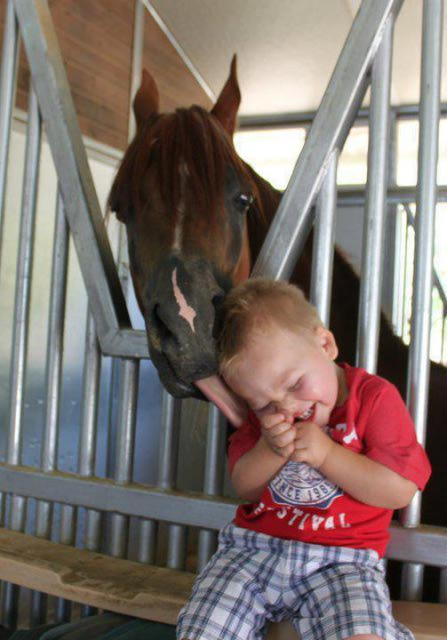 licking palm or face
Question
licking
hello maam, what does it mean i
licking palm or face
Question
licking
hello maam, what does it mean i
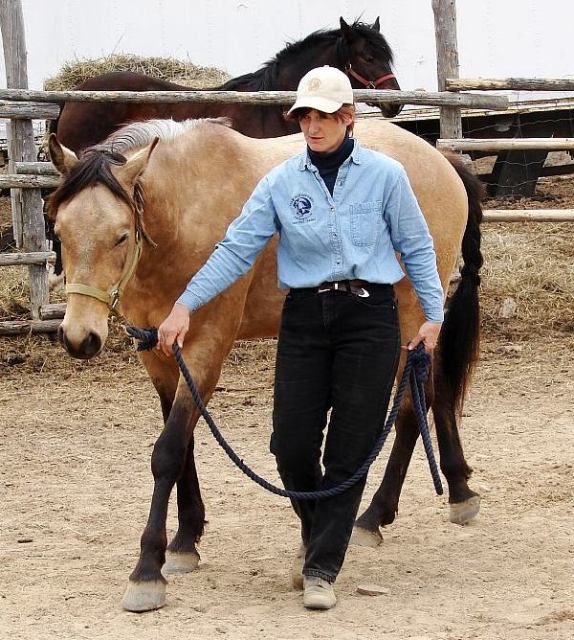 Arabian Mare
QuestionI have had a large dog coming onto my property
Arabian Mare
QuestionI have had a large dog coming onto my property
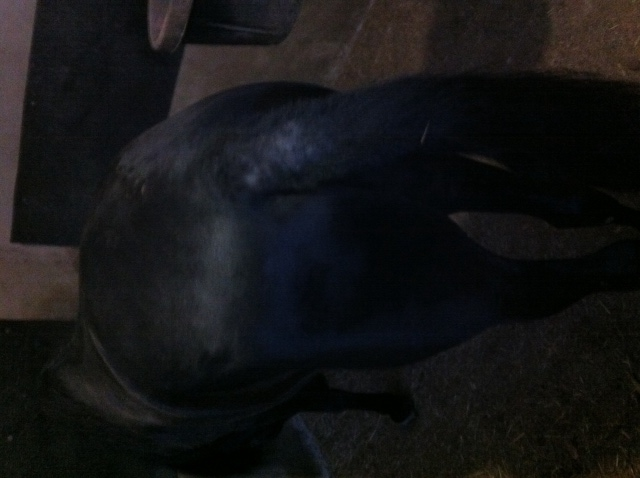 Hair loss
Question
Tail Tail close up
Rick: i have r
Hair loss
Question
Tail Tail close up
Rick: i have r
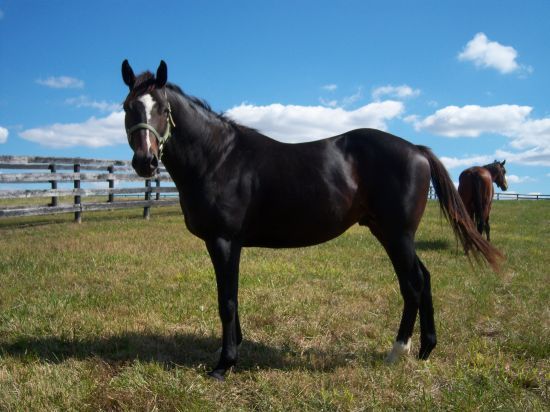 Starting a terrified horse
Question
Ben
Hi. I have a 5 yr old tb gelding that I ha
Starting a terrified horse
Question
Ben
Hi. I have a 5 yr old tb gelding that I ha
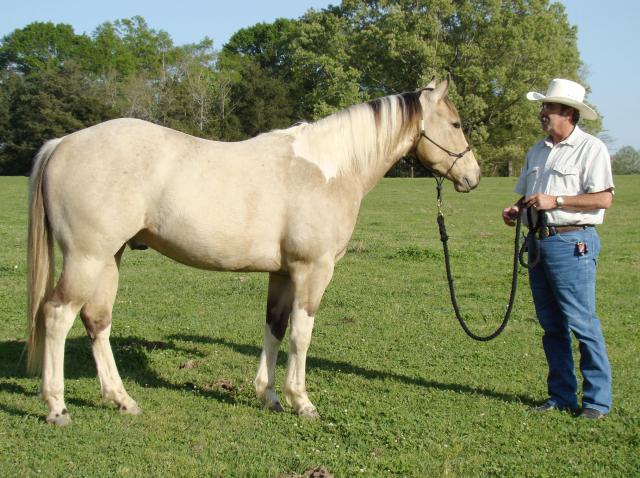 My horse has a bad habbit.
QuestionI bought a Walking horse about 2 weeks ago, he
My horse has a bad habbit.
QuestionI bought a Walking horse about 2 weeks ago, he